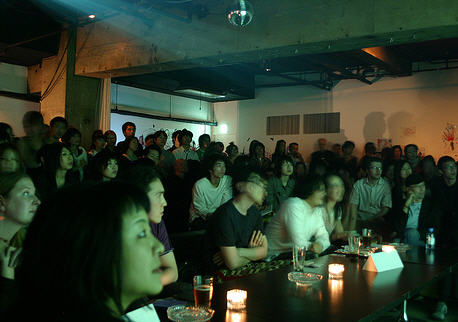The Milwaukee Interactive Marketing Association has come back to life, and its first event of what promises to be a fascinating season will be Thursday night, at the William F. Eisner Museum of Advertising. Bryan Rasch of Hanson Dodge will discuss how to meet the online needs of what his firm calls Brand Champions. It’s a somewhat ironic term, since the sites his company creates for their core clients (including Trek Bikes) are for “active lifestyle” consumer products. These sites cater to champions of all stripes — some of the most active consumers, including triathletes, pro fishermen and other avid outdoors people.
I spoke with Bryan to get a feel for his company’s approach to online branding. I wanted to know his thoughts on three topics that are being hotly debated today. They are as follows:
- Influentials: Do Malcolm Gladwell’s Influentials really exist? And if not, aren’t any efforts to court brand champions ultimately wasteful?
- Net Promoter Score (NPS)*: Where do you stand on the topic of this metric?
- Social Media As Brand Promotion: Isn’t the potential for negative online reviews too harmful to warrant opening your brand to public discussion?
JL: First, Bryan, I’d like to know what you think of those people, such as Bob Garfield (the AdAge columnist) and Clive Thompson (in his February Fast Company piece) who have claimed that there is no validity to the concept of courting a product’s Influentials?
BR: They have a point in that you can’t identify a small number of extremely influential people, to whom everyone else turns for advice on a brand. Brand champions are a much broader base of product users. They are vocal, and they particularly prefer the web as their megaphone. But aside from their passion for the brand, they are no different from other customers. They may make up large numbers — upwards of 10% of the total number of visitors to a typical brand site.
JL: I’ve heard you talk about Net Promoter Scores (NPS) as a metric. Do you encourage this type of evaluation, or do you agree with those who think it’s too simplistic?
BR: I do encourage the use of NPS, but primarily as a measure of true customer satisfaction. The strength in this measurement lies in knowing that it doesn’t predict a user’s likelihood of being a brand champion, but the likelihood of that customer buying from you again. But I think this score can also help you understand the likelihood of your consumers to speak out … to write positive reviews, recommend your brand to others online, etc. Thus the metric is helpful as a barometer of how your brand may perform within Social Media formats.
JL: If you want to encourage brand champions online, you have to open the gates and let in all opinions. A minority of brands are comfortable with a certain level of negative buzz. But most refuse to provide forums for discussion because they’re afraid of getting flamed — of being host to unfavorable reviews. What is your response to those fears?
BR: The negative reviews will happen, and often they’ll happen first. But reviews seek an equilibrium, just like water. Initially, a negative review may show up, because a consumer is angry. But over time, other consumers who love the brand tend to prevail. Over time the sum of the reviews reaches the proper level of consumer opinion.
I’ve never come across a set of reviews where it wasn’t an accurate barometer of how the brand fulfills consumer expectations.
Do join me Thursday night at what promises to be a provocative and informative presentation. Visit the Milwaukee Interactive Marketing Association site for details.
* NPS asks customers one question: “How likely is it that you would recommend us to a friend or colleague?” Customers reply with a score on a scale of 10, with 10 being “Extremely likely.” The net score is the sum of all customers scoring nine and 10, minus those scoring six or less. Incredibly high scores are in the 75 to 80 percent range of your customers. The average is only 15%.
Â
